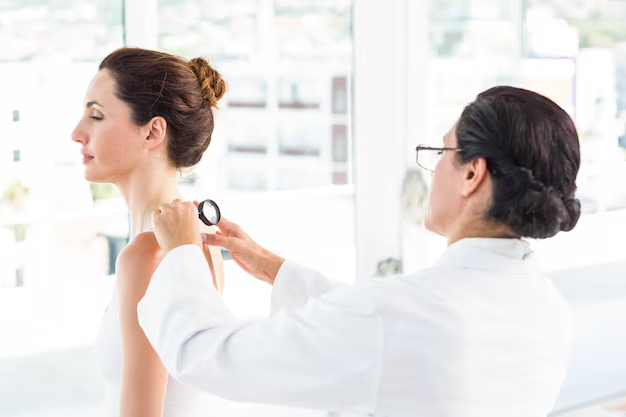Understanding Scoliosis: How to Know if You Have It
Have you ever stood in front of a mirror, scrutinizing your reflection, and noticed that one shoulder droops slightly lower than the other? Or perhaps you've been told you slouch more to one side when carrying your school backpack? These signs could merely be quirks of posture, or they could hint at something more—scoliosis. But what exactly is scoliosis, and how can you tell if you have it? Read on as we delve into understanding scoliosis, its symptoms, causes, and what steps you can take if you suspect you might have it.
What is Scoliosis?
Scoliosis is a condition where the spine curves sideways in an "S" or "C" shape. Though some degree of spinal curvature is normal, scoliosis involves a curve that is often pronounced enough to be visible when looking at someone's back. This condition can occur at any age but is most common during the growth spurt just before puberty.
Key Characteristics of Scoliosis:
- Curvature Visibility: Often noticeable when bending forward.
- Posture Issues: Uneven shoulders, hips, or waist.
- Common Age: Typically appears between ages 10-15.
Signs and Symptoms: How to Spot Scoliosis
Spotting the signs of scoliosis early can be pivotal in managing its progression. Here are some common indicators:
H3: Physical Symptoms to Watch For
- Uneven Shoulders: One shoulder appearing higher than the other.
- Prominent Shoulder Blade: A shoulder blade that sticks out more on one side.
- Uneven Waist: An uneven waistline where one side might appear higher.
- One Side Hump: Ribs that protrude more on one side when bending forward.
- General Asymmetry: A difference in the way clothes fit.
Self-Assessment Tips
Look in a mirror and perform a simple self-assessment:
- Stand straight and observe: Look for unevenness in shoulders or hips.
- Bend forward test: Bend at the waist and see if one side of the back appears higher.
While these signs can indicate scoliosis, remember they are not a substitute for professional diagnosis.
Causes of Scoliosis: Untangling the Mystery
Understanding what causes scoliosis can be something of a puzzle. In about 80% of cases, the cause is unknown, termed "idiopathic scoliosis." Here are some factors that could contribute:
Genetic Factors
There is evidence to suggest that idiopathic scoliosis may run in families. If your parents or siblings have scoliosis, you might be at higher risk.
Neuromuscular Conditions
Some conditions such as cerebral palsy or muscular dystrophy can lead to scoliosis due to imbalances in muscle and bone development.
Congenital Scoliosis
Arising from malformations of the spine that are present at birth, congenital scoliosis is less common and is usually detected at an earlier age.
Other Complications
- Injury: Spinal injuries may sometimes cause or exacerbate scoliosis.
- Uneven Leg Length: Significant discrepancies in leg length might contribute to a crooked spine.
Diagnosis: What to Expect
If signs suggest scoliosis, the next step involves medical evaluation. Here's what you can expect:
Initial Physical Examination
A healthcare provider will likely conduct a thorough examination, which includes:
- Adam’s Forward Bend Test: Assesses for asymmetries as you bend forward.
- Observation of Posture: Checks for unevenness in the shoulders and hips.
Imaging Tests
If necessary, imaging tests such as an X-ray can provide a detailed look at the spine, allowing healthcare professionals to measure the degree of curvature.
Curve Measurement
Using the Cobb angle, providers determine the severity, categorized as:
- Mild: Less than 20 degrees.
- Moderate: 20 to 40 degrees.
- Severe: Greater than 40 degrees.
Having a detailed diagnosis helps in crafting an appropriate treatment plan.
Management and Treatment Options
Once diagnosed, several treatment paths can be explored depending on the severity of the curve and other factors.
Observation
For mild curves, regular monitoring every 4-6 months may be recommended to see if the scoliosis progresses.
Bracing
In growing children and adolescents with moderate curves, bracing can prevent further curvature. While braces won't make an existing curve go away, they can keep it from getting worse.
Physical Therapy
Engaging in targeted exercises can help strengthen muscles around the spine and improve posture, though it does not alter the curve itself.
Surgical Intervention
Surgery might be considered for severe scoliosis. The most common procedure is spinal fusion, where two or more of the vertebrae are permanently joined.
Lifestyle Adjustments
Living with scoliosis often means making a few adjustments in day-to-day life. Here are some tips that could help:
Adaptations for Comfort
- Ergonomic Furniture: Use chairs and desks that support the spine.
- Proper Footwear: Wear properly fitted shoes that promote balance.
Exercise and Nutrition
- Stay Active: Engage in low-impact activities like swimming or cycling.
- Balanced Diet: Maintain a diet rich in calcium and vitamin D to support bone health.
Emotional Support
Allowing scoliosis to affect one's self-esteem is not uncommon. Connecting with support groups can be tremendously uplifting.
When to Seek Professional Advice
While self-examinations are a good start, professional evaluations are crucial. Seek medical advice if:
- You notice a rapidly changing curve.
- Pain accompanies scoliosis symptoms.
- The scoliosis progression affects daily activities.
Understanding scoliosis is crucial for managing its implications on daily life. Recognizing the signs, knowing when to seek help, and staying informed about management options empower you to handle scoliosis with confidence. By staying proactive, you can ensure that scoliosis impacts your life as little as possible.
Quick Tips and Takeaways:
- 🔍 Self-Check: Regularly check for uneven shoulders, waist, or hips.
- 👨⚕️ Seek Evaluation: Professional diagnosis through physical and imaging tests.
- 🏃♀️ Stay Active: Engage in non-strenuous exercises to maintain muscle strength.
- 🛠️ Lifestyle Adjustments: Use ergonomically supportive furniture and proper footwear.
- 💬 Emotional Support: Don’t hesitate to seek emotional assistance if scoliosis affects your confidence.
By being informed and proactive, you can manage scoliosis effectively and continue to lead a healthy, active life.
